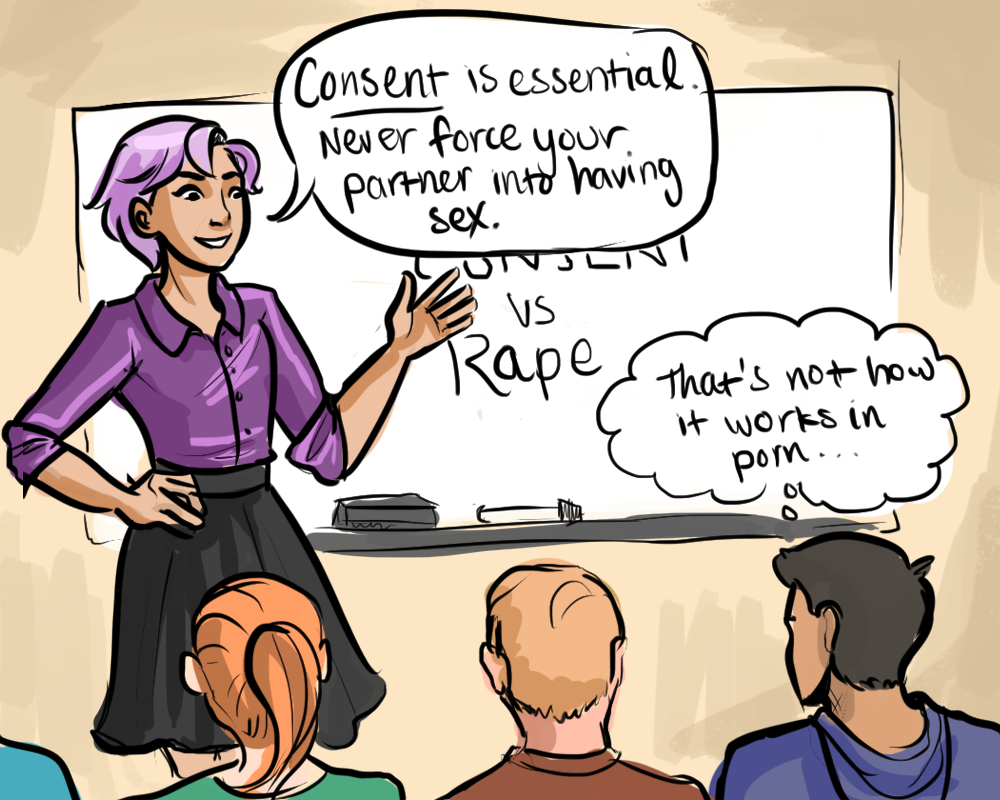Staff Writer
Illustration by Sandra Moore
The catchy theme song from the “Just Around the Corner” videos is one of the few things that students remember about South Pasadena’s fifth grade “sex education.” When students go through the course, they are separated by gender and shown the respective clips on their own developing bodies; however, sex is hardly mentioned, let alone discussed.
In the following years, the curious preteens begin puberty and seek out information about sex through the internet, which is littered with easily accessible pornography. The way children perceive sex becomes warped by unrealistic displays of intimacy which are often unsafe, unsanitary, and violent.
Popular porn websites predominantly portray unprotected as well as non-consensual sex. In the videos, women are often raped, or at least brutally abused. This increases the negative effects on students who lack a background of information on sex, from school or elsewhere, to balance the misconceptions that porn promotes.
The porn industry often argues that its creation of these types of videos feeds a minority’s serious fetishes which are better lived through the fantasy of porn than through reality. However, as one of the most consumed products on the internet, porn shapes mainstream society with its unhealthy portrayals of sex. Throughout American culture, women continue to be depicted as sexual objects, alive to serve the needs of men, and internet pornography reinforces these detrimental ideas in many young children.
Waiting until high school to require a complete health course is ineffective. Instead, the district needs to create appropriate sex education for students in middle school. Parents may be concerned that their kids are not mature enough to learn about sex, but when the result of misinformation is their children’s lack of safety and health, it is far better to promote a positive source of sexual understanding.



